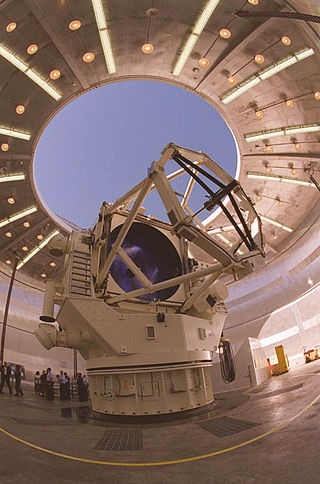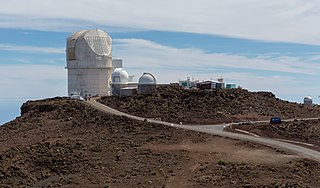Self-guided Sightseeing Tour #1 in Maui County, United States
Legend
Tour Facts
0.6 km
70 m
Experience Maui County in United States in a whole new way with our free self-guided sightseeing tour. This site not only offers you practical information and insider tips, but also a rich variety of activities and sights you shouldn't miss. Whether you love art and culture, want to explore historical sites or simply want to experience the vibrant atmosphere of a lively city - you'll find everything you need for your personal adventure here.
Activities in Maui CountyIndividual Sights in Maui CountySight 1: Advanced Electro Optical System Telescope
The 3.67 m Advanced Electro Optical System Telescope is a Department of Defense telescope at Haleakala Observatory. The telescope is part of the Maui Space Surveillance Complex (MSSC), which in turn is part of the Air Force Maui Optical and Supercomputing Site (AMOS).
Wikipedia: 3.67 m Advanced Electro Optical System Telescope (EN)
Sight 2: Pan-STARRS
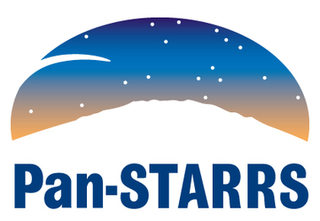
The Panoramic Survey Telescope and Rapid Response System located at Haleakala Observatory, Hawaii, US, consists of astronomical cameras, telescopes and a computing facility that is surveying the sky for moving or variable objects on a continual basis, and also producing accurate astrometry and photometry of already-detected objects. In January 2019 the second Pan-STARRS data release was announced. At 1.6 petabytes, it is the largest volume of astronomical data ever released.
Sight 3: Daniel K. Inouye Solar Telescope
The Daniel K. Inouye Solar Telescope (DKIST) is a scientific facility for studies of the Sun at Haleakala Observatory on the Hawaiian island of Maui. Known as the Advanced Technology Solar Telescope (ATST) until 2013, it was named after Daniel K. Inouye, a US Senator for Hawaii. It is the world's largest solar telescope, with a 4-meter aperture. The DKIST is funded by National Science Foundation and managed by the National Solar Observatory. The total project cost is $344.13 million. It is a collaboration of numerous research institutions. Some test images were released in January 2020. The end of construction and transition into scientific observations was announced in November 2021.
Sight 4: ATLAS 1
The Asteroid Terrestrial-impact Last Alert System (ATLAS) is a robotic astronomical survey and early warning system optimized for detecting smaller near-Earth objects a few weeks to days before they impact Earth.
Wikipedia: Asteroid Terrestrial-impact Last Alert System (EN), Website
Sight 5: Faulkes Telescope North
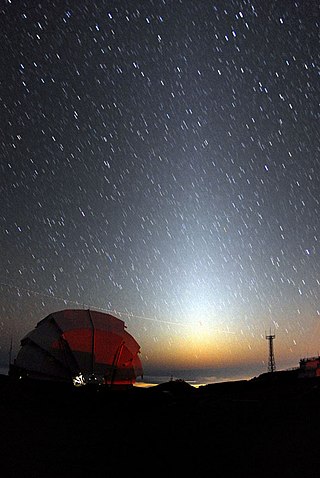
The Faulkes Telescope North is a clone of the Liverpool Telescope, and is located at Haleakala Observatory in the U.S. state of Hawaii. It is a 2 m (79 in) f/10 Ritchey-Chrétien telescope.
Sight 6: Las Cumbres Observatory
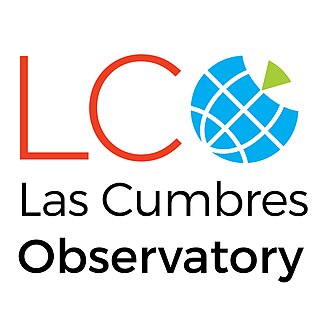
Las Cumbres Observatory (LCO) is a network of astronomical observatories run by a non-profit private operating foundation directed by the technologist Wayne Rosing. Its offices are in Goleta, California. The telescopes are located at both northern and southern hemisphere sites distributed in longitude around the Earth. For some astronomical objects, the longitudinal spacing of telescopes allows continuous observations over 24 hours or longer. The operating network currently consists of two 2 meter telescopes, nine 1 meter telescopes, and seven 40 cm telescopes, placed at six astronomical observatories. The network operates as a single, integrated, observing facility, using a software scheduler that continuously optimizes the planned observing schedule of each individual telescope.
Share
How likely are you to recommend us?
Disclaimer Please be aware of your surroundings and do not enter private property. We are not liable for any damages that occur during the tours.
GPX-Download For navigation apps and GPS devices you can download the tour as a GPX file.
